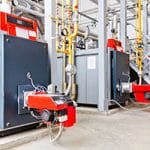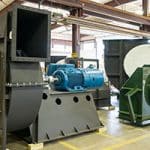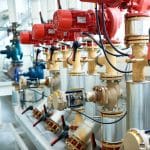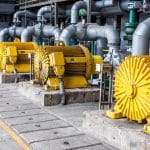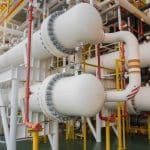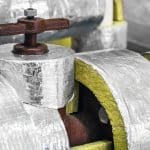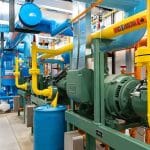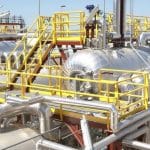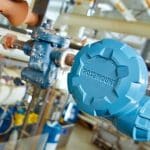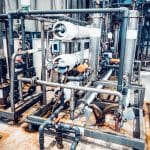The 3 kEys
- A structured maintenance strategy minimizes energy waste, enhances equipment life, and sustains operational reliability. I’ve not found anybody who’s been willing to disagree with that.
- Operators should begin by monitoring the pump’s operational data, such as pressure, flow, and vibration, comparing this information against baseline values. This allows for the identification of emerging inefficiencies or mechanical issues before they escalate.
- Advanced monitoring systems with real-time sensors can often replace daily manual checks, though periodic physical inspections remain important to identify issues that automated systems might miss.
Proper maintenance is the key to ensuring the longevity, efficiency, and reliability of industrial centrifugal pump systems. By breaking down the tasks into weekly, monthly, quarterly, and annual schedules, plant operators can tackle potential issues proactively and prevent costly downtime.
A structured maintenance strategy minimizes energy waste, enhances equipment life, and sustains operational reliability. Below is a detailed maintenance plan to keep your pump system running smoothly, along with authoritative resources to provide further guidance.
Weekly Maintenance: When and Why It’s Necessary
Not all pump systems require weekly maintenance. For pumps operating intermittently, in low-risk applications, or under very light loads in clean environments, the frequency of checks might be reduced. Similarly, advanced monitoring systems with real-time sensors can often replace daily manual checks, though periodic physical inspections remain important to identify issues that automated systems might miss.
When weekly maintenance is warranted, the focus is on critical components like alignment, lubrication, seals, and fasteners. Ensuring the pump and motor alignment remain within acceptable tolerances is essential, as misalignment can lead to excessive wear and vibration. Inspecting mechanical seals, gland packing, and couplings for any signs of wear or improper adjustment helps prevent leaks and premature failures.
Additionally, checking for loose bolts and connections across the pump and motor prevents vibration-related damage. Topping off lubricants in bearings or other moving parts is crucial, but always ensure the lubricant type and quality meet manufacturer recommendations.
For further reading, take a look at Mastering Centrifugal Pump Maintenance: A Comprehensive Checklist.
Monthly Maintenance: Fine-Tuning and Trend Analysis
Monthly maintenance takes a deeper dive into performance and wear trends. Operators should begin by monitoring the pump’s operational data, such as pressure, flow, and vibration, comparing this information against baseline values. This allows for the identification of emerging inefficiencies or mechanical issues before they escalate.
Cleaning filters, strainers, and screens within the system is a critical task, ensuring that blockages do not restrict flow or overwork the pump. Mechanical seals or gland packing require closer attention, and replacement may be necessary if wear levels are excessive. Electrical components such as motor terminals, cables, and connections should be inspected for signs of degradation. Additionally, clearing accumulated dirt, dust, or debris from the pump’s exterior and motor housing maintains a clean and well-ventilated environment, preventing overheating and contamination.
Quarterly Maintenance: Advanced Diagnostics and Component Checks
Every quarter, maintenance activities shift to detailed diagnostics and system assessments. Vibration analysis is one of the most effective tools for detecting early signs of misalignment, imbalance, or bearing issues. Infrared thermography can provide a thermal perspective, identifying hotspots that indicate inefficiencies or pending failures.
Inspection of internal components, including the impeller, wear rings, and casing, should be conducted to check for erosion, corrosion, or scaling. Any damaged components should be replaced immediately. Bearings should be inspected, lubricated, or replaced if wear is significant. Lastly, evaluating pump efficiency by comparing current performance metrics with original specifications can reveal whether the pump is consuming excessive energy or underperforming.
Annual Maintenance: A Comprehensive Overhaul
Annual maintenance is the most thorough stage of pump servicing, involving complete disassembly and detailed inspection of all components. Impellers, wear rings, shaft sleeves, bearings, and mechanical seals should be assessed and replaced if they exhibit significant wear. The shaft should be checked for straightness and any signs of wear, as misaligned or bent shafts can lead to vibration and excessive component stress.
A hydrostatic pressure test can verify the integrity of the pump casing, detecting any weaknesses or failures. Electrical systems require a complete overhaul, including recalibrating motor controls, testing protective relays, and measuring insulation resistance. Lubrication systems should be drained and refilled with manufacturer-approved lubricants. Finally, all connected piping and valves should be inspected for corrosion, blockages, or mechanical damage that could impact system performance.
Additional Tips for Maintenance Success
Emergency checks should always be part of your maintenance protocol. If you notice sudden changes in performance, unusual noises, or leaks, address these issues immediately to prevent further damage. Unplanned failures can lead to costly downtime and expensive repairs.
Ensuring that your maintenance staff is well-trained in proper procedures and safety protocols is essential. Pumps operate under high pressure and often handle hazardous materials, making adherence to safety measures critical.
Maintaining an inventory of critical spare parts, including bearings, seals, and impellers, is another key success factor. Having these parts readily available minimizes downtime and keeps operations running smoothly.
The Big Finish
By following this structured maintenance regime, facilities managers and plant operators can maximize the reliability and efficiency of centrifugal pump systems while extending their lifespan. Routine inspections, timely interventions, and proper documentation create a system of proactive care, helping businesses avoid costly repairs and unplanned downtime.
Want to learn what your efforts are worth? See Hydraulic Institute’s Pump Life Cycle Costs: A Guide to LCC Analysis for Pumping Systems describes essential pumping system components and shows you, step-by-step, the considerations necessary to specify, design and operate the system for minimum life cycle cost.




